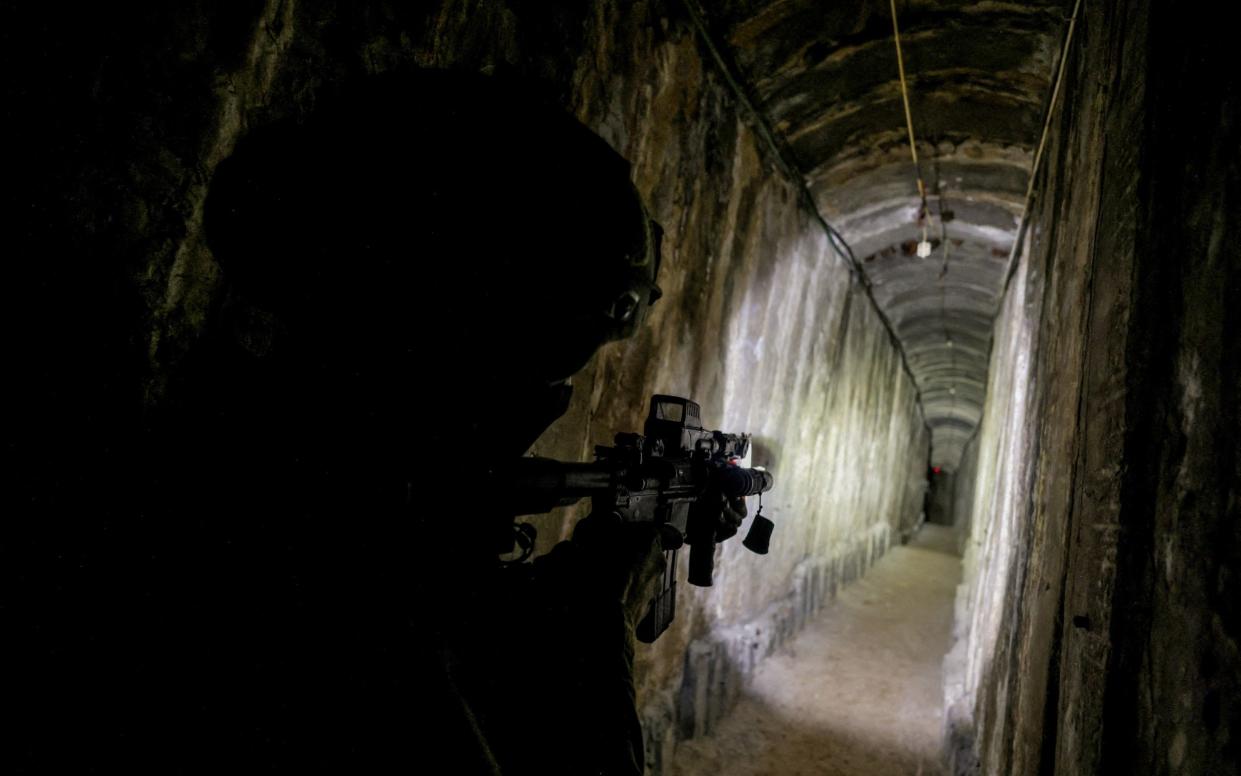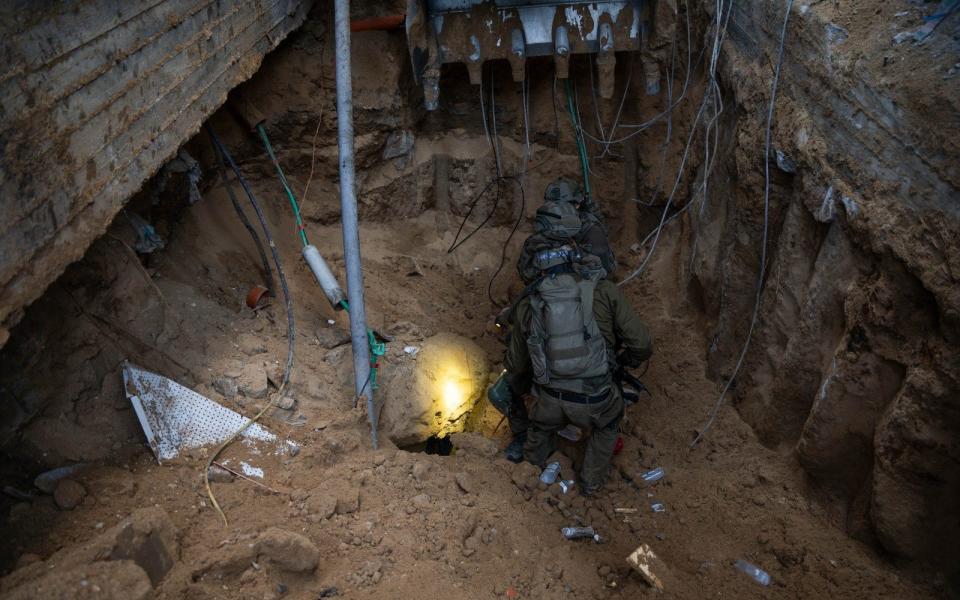Israel could destroy Hamas tunnels with flood of seawater

Israel is planning to force Hamas to abandon the tunnels beneath Gaza by flooding them with seawater, it has been reported.
US officials told the Wall Street Journal that the Israel Defense Forces (IDF) hoped to destroy the terror group’s vast subterranean network by pumping water from the Mediterranean Sea into it.
The IDF is reported to have assembled at least five pumps capable of sending hundreds of thousands of litres of water cascading underground every hour.
The pumps were said to be located about one mile north of the Al-Shati refugee camp, in northern Gaza.
The officials said Israel had not disclosed when it might seek to unleash the deluge on the tunnels – which are more extensive than the London Underground – as deliberations over whether to use the tactic are ongoing.
They fear that it would bring international condemnation but told the newspaper there were few other options to permanently disable what is commonly known as the “Gaza Metro”.
Some officials in the US, which is Israel’s foremost ally and has given it hundreds of millions of pounds to develop anti-tunnel techniques in recent years, were reported to have privately expressed concern about the plan.
The IDF declined to comment but said it was dismantling the network in “various ways”.
Asked about the reports, Herzi Halevi, the IDF’s chief of staff, said flushing Hamas out of the tunnels was a “good idea”.
The tunnels have been used to devastating effect by Hamas during the war so far, with terrorists launching surprise hit-and-run attacks on Israeli soldiers from their underground hideouts.
Hamas is believed to be hiding its leadership, the 137 remaining hostages and the vast bulk of its arsenal in the network, which it claims extends for more than 300 miles.

Yocheved Lifshitz, an 85-year-old hostage released in October, has described it as a “spider web” with large hall-like rooms inside.
Some are believed to be kitted out with running water, electricity and even bedrooms, and many tunnel shafts emerge in civilian buildings such as hospitals, mosques and schools, according to the IDF.
A flood of seawater would take weeks to knock the entire tunnel network out of action, it has been estimated.
Although this would give Hamas terrorists time to flee above ground, the move could ensure the evacuation of the remaining hostages and strip the terror group of one of its strongest military advantages.
Israel says it has destroyed 60 miles of the tunnels and more than 500 entry points since launching its invasion of Gaza but it is now turning to more unconventional methods to neutralise their threat.
Although the IDF has a dedicated corps of anti-tunnel engineers and underground commandos, it has attempted to preserve soldiers’ lives by deploying dogs, robots and drones to explore the network up to now.
Unconventional measures
Explosives and expanding foam have also been used to destroy and block up the tunnels.
The potential new flooding plan has evoked comparisons with Egypt, which used seawater to destroy a labyrinth of Hamas smuggling tunnels running beneath its border with Gaza in 2015.
However, there are fears that the use of seawater flooding in Gaza could have unintended consequences by seeping into already-scarce drinking water supplies, since the tunnels have been dug through permeable soft sandstone.
“It’s hard to tell what pumping seawater will do to the existing water and sewage infrastructure,” said Jon Alterman, senior vice president at the Washington DC-based Center for Strategic and International Studies.
“It is hard to tell what it will do to groundwater reserves. And it’s hard to tell the impact on the stability of nearby buildings.”
When Egypt flooded its tunnels in 2015, local farmers complained that their harvest was ruined.
“It could compound the humanitarian crisis,” said Mick Mulroy, the former US deputy assistant defence secretary.
But he added that flooding would likely be militarily successful and force Hamas above ground.
Israel is also said to be considering using liquid explosives and thermobaric weapons to damage the network.
The former expand before detonating and the latter absorb oxygen from the air. Both create more devastating explosions than conventional alternatives.
But there are concerns about the potential impact they could have on civilians in densely populated areas if widely used.
A ‘massive challenge’
An alternative option would be for the IDF to dig its own tunnels and deliver explosives, drones and potentially even soldiers right to the heart of the Hamas network.
“Israel should . . . get to the heart of the Hamas system not from above, but from below,” Yehuda Kfir, a civil engineer and captain in the IDF’s reserves, told the Financial Times.
“You would need something like automated excavating machines…. that would dig towards the target.”
Efforts to locate and destroy the passages have been undermined by Gaza’s dense urban environment and Israel’s intense aerial bombardment of the strip, which has left the enclave strewn with rubble that undermines the work of ground-penetrating radar and acoustic sensors.
Israeli officials say Hamas has also learned from previous attacks, digging deeper and encasing the tunnel system with reinforced concrete in a bid to protect itself from the 5,000lb GBU-28 laser-guided “bunker buster” bombs that the IDF reportedly used during a 2021 offensive against the terror group.
“The tunnels are a massive challenge,” one official told the FT. “They [Hamas] have also placed things inside – booby traps, obstacles to our movement inside the tunnels – that increase the risk [to our forces].”
